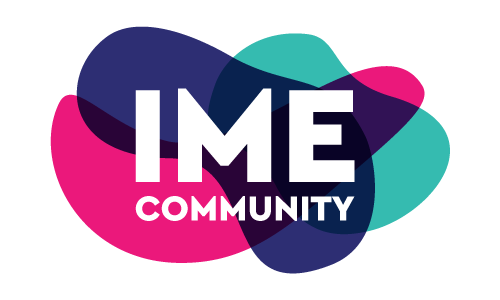Health Benefits
Improves: Cardiovascular function, blood glucose regulation, dyslipidemia (high cholesterol), and HDL cholesterol.
Reduces: Blood pressure, risk of certain cancers, mortality rate, medications, dementia risk, pain, depression
Knowing How Much Physical Activity Is Enough
General health benefit: Moderate aerobic exercise 150 min/week
Prevention of weight gain: 150-250 minutes per week
Stay out of calories in calories out mentality. Stay out of weight loss thinking with exercise. We can’t exercise our way out of an unhealthy diet.
Write Your Own Exercise Prescription
According to the 2018 PA Guidelines for Americans, 80% of US adults and adolescents are insufficiently active.
By Sunday of this week, you will be able to write your own Exercise prescription made up of the CORE Components: FITTE
- Frequency
- Intensity
- Time
- Type
- Enjoyment
Physical Activity and Energy Expenditure
What is Energy Expenditure? The amount of energy a person needs to carry out a physical function is known as energy expenditure.
Energy expenditure is made up of resting metabolic rate (energy expended at rest), physical activity, and dietary thermogenesis (our energy from food). The biggest difference in energy expenditure among individuals is physical activity. There are different ways to measure energy expenditure.
A rule of thumb breakdown formula for components of total energy expenditure:
70% resting metabolic rate + 20% physical activity + 10% diet-induced thermogenesis = TEE
Energy Expenditure Definitions:
EAT (Exercise Activity Thermogenesis): Planned, structured and repetitive physical activity with the goal to improve health.
NEAT (Non-Exercise Activity Thermogenesis): Not all physical activity is exercise. Did you know that not all Physical Activity is Exercise: NEAT (Non- Exercise Activity Thermogenesis): includes common daily activities such as walking, standing, and climbing stairs and can result in up to 150-500 kcal/day of energy expenditure per day.
Get started with low or no-impact activities and make modifications as needed; Balance training; and Strength training
Work in rest days to restore. Your body may need days off to heal and rejuvenate. Listen to your body. There’s no timeline or summit. It’s just daily intentional practice and showing up for yourself. Practice self-compassion and don’t mobilize that inner critic, self-judging shaming, negative self-talk when you need to take a break. Set realistic goals for yourself. Create self-trust. Remember, you are worthy of your health goals. You can’t hate yourself to a weight goal or a fitness goal.
Reverse Your Insulin Resistance Challenge Week 5 Plan
Movement Monday: Your body was made to move! 7- day FITTE challenge. What’s your why? Don’t make it about calories in calories out. Stay out of all or nothing thinking. Stay out of waiting for motivation to come to you. All movement counts. You are an exerciser.
- Physical Activity History (remember your past self is only your thoughts about your past self):
- Success and/or failure (it’s all learning) of previous physical activity/exercise efforts
- If no longer doing routine physical activity/exercise regimen:
- When? Date of change
- What? Cause of change
- Why? Identify barriers to re-engagement
- Current physical activity?
- Current fitness level, endurance capacity, and mobility?
- Access to locations for increased physical activity/exercise (e.g. gym, workplace, exercise facilities, bike paths and walkways or trails, urban or rural home setting)?
- Actual and perceived barriers to increased physical activity?
Tracking Tuesday: Know yourself. Accountability partner needed? Don’t count calories burned unless you are already doing this or if you have managed your mind. Are you working towards a goal like walking a marathon a week? Getting your steps in on the daily? Create self-trust by documenting the evidence that you are moving!
Tracking Progress:
- Daily activity logs (written or electronic)
- Pedometer/accelerometer logs
- Dynamic training metrics (miles run, laps swum, etc.)
- Resistance training metrics (i.e., muscle-circumference measurements, reps, sets, etc.)
- Percent body fat measurements
Wednesday Wisdom: Let’s nerd out. What’s your target heart rate? Check your resting heart rate which is the number of times your heart beats per minute when you’re at rest. A good time to check is in the morning.
Your maximum HR is about 220 minus your age.
AHA (American Heart Association) has a table that shows Target HR zone during moderate intensity activities is around 50-70% of your maximum HR. So, for a 20 year-old your Target Heart Rate is 100-170. If you are just starting out, aim for the lower range of your target heart zone (50 percent) and gradually build up.
Thursday Thoughts: Time for a Thursday belief upgrade? There’s nothing going wrong if you are uncomfortable when you are exercising. You can take a break when you need to. Practice self-compassion. Don’t make it mean anything about you or start believing what your brain will be offering up, thoughts like, “See, you are not meant for this!” I put this in quotes because this is an actual quote from my inner critic.
A belief is a powerful thought on a loop in your brain that you most likely haven’t challenged. Remember, thoughts are optional and you are not your thoughts. Same with beliefs. My beliefs about myself and fitness? Now, do a belief upgrade. Here’s an example of a belief upgrade I worked on with my fitness coach.
1.) I’m not an athlete. Upgrade: My body was created to move. I am an active person.
Friday Fitness Fun: Try something new and challenge yourself. You won’t know unless you try. You may love it. You get to choose what is fun for you. Find a friend and try new things. You can keep it simple like a new walking route, going to a new park, trying Zumba or boxing.
Saturday Success: Increase your NEAT! Let’s focus on activities around your house and yard and running errands. Make sure you are moving throughout the day. What’s NEAT? It’s Non-Exercise Activity Thermogenesis. Not all physical activity is exercise. NEAT is energy expenditure not typically considered physical exercise (standing, walking, stair climbing, fidgeting, cleaning, singing, and other activities or daily living). Increase your NEAT: Take stairs instead of elevators; park further from a destination, monitor number of steps per day with a pedometer.
Sunday Strategy: Write your own FITTE Exercise Prescription:
IME Community Exercise Rx:
Aerobic Activity
Type: Walk Jog Swim Bike Elliptical
Frequency (days/week): 1 2 3 4 5 6 7
Intensity: Light Moderate Vigorous
Time (minutes/day): 10 20 30 45 60
Make It Fun: Music Buddy Dance Class_______
Strength Training:
- Do muscle strengthening exercises of moderate intensity at least two days per week
- Not all activities require going to a gym. You can use resistance bands or do body-weight exercises (e.g., push-ups, lunges, planks, squats, jumping jacks as you are able).
NEAT (Non-Exercise Activity Time):
- Park farther away from entrances.
- Take the stairs instead of the elevator/escalator.
- Stand instead of sit.
- Set a steps/day goal:___________
- Other: ______________________________________________
Signature of Commitment: Dr. Karla/______________________________
Get ready to feel your emotions for week 5 of the reverse your insulin resistance challenge!
Watch the Video Replay
Up Next: Week 5 – Social Media Weight Stigma and Friend Drama
Previous: Coping with Food Cravings and Urges
Reverse Your Insulin Resistance Challenge Table of Contents
Week 1: Introduction
Week 2: Why Do We Overeat?
Week 3: Coping with Food Cravings and Urges
Week 4: How Much Physical Activity Is Enough?
Week 5: Social Media Friend Drama
Week 6: Get to Your Natural Weight Set Point
Week 7: Your Metabolic Health
Week 8: Positive Body Image
Week 9: Diffusing Low Carb Confusion
Week 10: Self Love Superpower
Week 11: Stress Less, Sleep More

